Are you a weekend warrior doing triathlons, marathons, cycling, or are you a sports club managing various types of sporting teams? Does the number of different types, sizes, brands, colours of strapping tape boggle your mind? Well you have come to the right place! Allow us to untangle, unravel and enlighten you about all things strapping tape related.
Brent Messer, General Manager of Alpha Sport says strapping tape is an essential item in the sporting persons toolkit to manage and prevent injury.
So what do the different types of strapping tape mean? Read below and let’s shed some light.
Rigid Strapping Tape
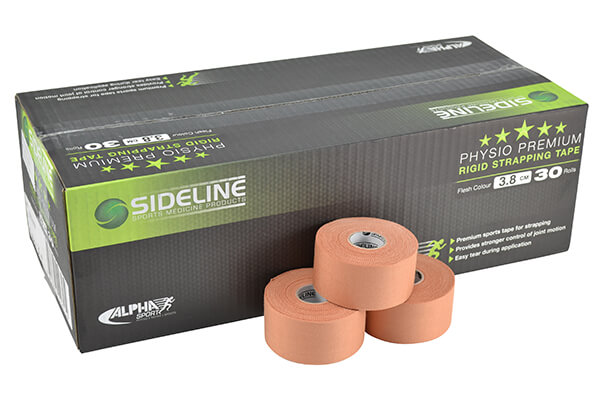 This tape is for stabilising joints. If you need something to be held securely, this is your tape. Rigid strapping tape will restrict the movement of ligaments, tendons and joints to help prevent injury or reinjury.
This tape is for stabilising joints. If you need something to be held securely, this is your tape. Rigid strapping tape will restrict the movement of ligaments, tendons and joints to help prevent injury or reinjury.
Brent says, “This tape, as its name suggests, is of a rigid construction, meaning it has no give or elasticity making it a bad choice for swollen injuries, but a good choice for keeping joints from moving freely.
“Remember, rigid strapping tape is not to be used over open wounds or grazes. You are best using an underwrap or a non adherent dressing pad before strapping,” he said.
This tape comes in 1.25cm for finger strapping; 2.5cm for thumbs; 3.8cm, which is the most common tape purchased, is for all joints, such as shoulders, elbows, knees and ankles; and, 5cm for those larger football legs or shoulders.
Shop our range of Rigid Tape here
Elastic Adhesive Bandages (EAB)
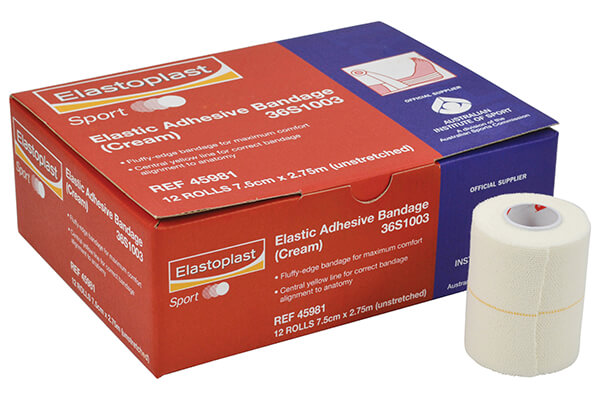 One great use of this type of tape is as an overwrap. You can overwrap rigid tape with this tape as it will provide greater stability and support. The second great use for this tape is in providing compression to soft tissue injuries because of its elasticity.
One great use of this type of tape is as an overwrap. You can overwrap rigid tape with this tape as it will provide greater stability and support. The second great use for this tape is in providing compression to soft tissue injuries because of its elasticity.
Brent says as this tape provides more stretch, it allows for greater movement which is why it can be used on swollen areas. “EAB is great for pre or post sporting activity to help minimise swelling, strains and sprains.”
This tape comes in 2.5cm, 5cm and 7.5cm.
Shop our range of EABs here
Hand Tearable EAB
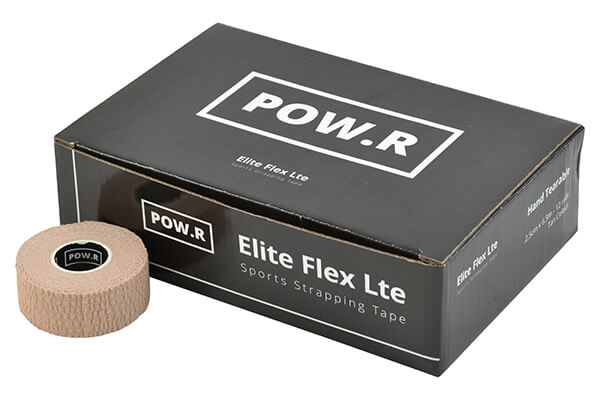 This tape is great for compression wrapping, overwrapping and for wrapping and securing pads, dressings, splints and ice packs. Its elastic properties provide strong and controlled support and the best element is you can rip it by hand. No scissors required.
This tape is great for compression wrapping, overwrapping and for wrapping and securing pads, dressings, splints and ice packs. Its elastic properties provide strong and controlled support and the best element is you can rip it by hand. No scissors required.
This tape is slightly lighter than your basic EAB making it perfect for those time pressured mid-game blood bin situations. “Got a team member with a superficial head bleed? Whack a dressing pad on it, wrap it around with this EAB and easily rip the tape by hand. Injury sorted and they are ready to go back on the field within minutes,” Brent said.
This tape comes in 2.5cm, 5cm and 7.5cm.
Shop our range of Hand Tear EABs here
Underwrap
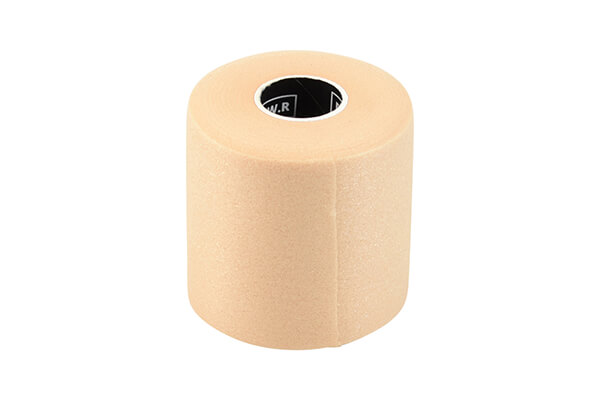 Underwrap goes directly on the skin creating a barrier between skin and either rigid or EAB strapping tape. Its purpose is to prevent irritation, allergies or swelling for people who have sensitive skin or cuts and abrasions. It’s lightweight and breathable and reduces friction making tapes stick better.
Underwrap goes directly on the skin creating a barrier between skin and either rigid or EAB strapping tape. Its purpose is to prevent irritation, allergies or swelling for people who have sensitive skin or cuts and abrasions. It’s lightweight and breathable and reduces friction making tapes stick better.
Shop our range of Underwrap here
Sports Foam
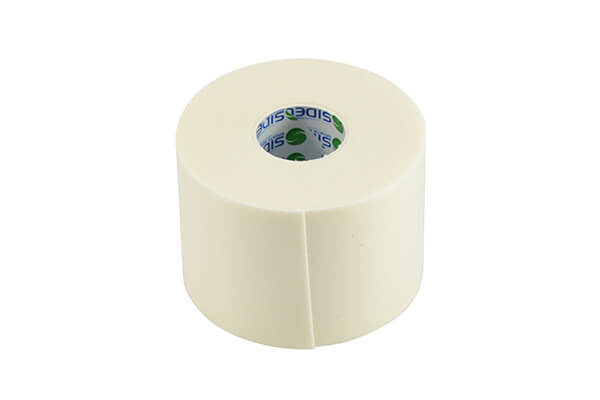 Getting blisters? Getting tape cuts in peculiar places because it’s rubbing? What you need is adhesive sports foam which is highly conformable and great for the back of ankles. This tape gives all direction stretch, is water-resistant, and hypoallergenic. It adds a foam protective layer used to protect, provent, and reduce blisters and skin irritations from sports taping, boots, and friction.
Getting blisters? Getting tape cuts in peculiar places because it’s rubbing? What you need is adhesive sports foam which is highly conformable and great for the back of ankles. This tape gives all direction stretch, is water-resistant, and hypoallergenic. It adds a foam protective layer used to protect, provent, and reduce blisters and skin irritations from sports taping, boots, and friction.
Shop our range of Sports Foam here
Kinesiology Tape / Dynamic Tape / Rock Tape
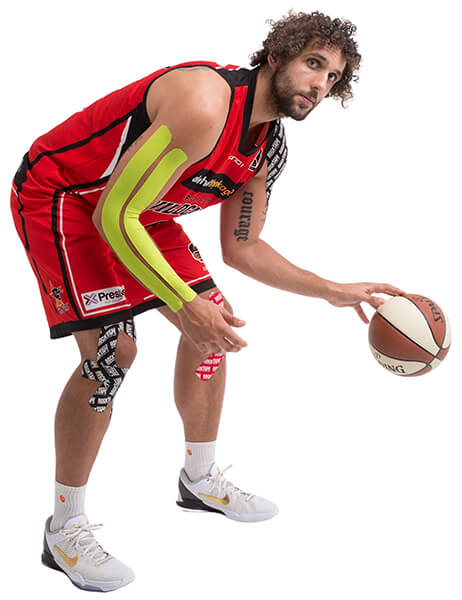 First, Kinesiology Tape, Dynamic Tape and Rock Tape are all the same thing. Rock Tape is a brand and it is a Kinesiology tape, or otherwise known as K Tape. K Tape stretches length-ways and is for rehabilitating muscles.
First, Kinesiology Tape, Dynamic Tape and Rock Tape are all the same thing. Rock Tape is a brand and it is a Kinesiology tape, or otherwise known as K Tape. K Tape stretches length-ways and is for rehabilitating muscles.
Dynamic tape however, is like the Tesla of K tape. It uses the most advanced technology and provides the greatest movability among tapes. It stretches both length-ways and width-ways.
Brent explains K Tape as manipulating the skin and muscles to promote and improve blood circulation to muscle and joint tissue, improve lymphatic drainage, improve fascia function, and provide pain relief while also providing additional stability and support.
K Tape is mostly used by advanced sports trainers and physios.
Shop our range of Kinesio / Dynamic Tape here
How do you get the best out of your tape?
Brent says the most important part in keeping your tape in good condition is storing it correctly. “Keeping your tape in a hot car is going to do nothing to help the integrity of the adhesive backing. Always store your tape in a dry, cool place,” he said.
The second important factor to get the most out of your tape is ensuring you prep the skin properly. “This means cleaning the skin of sweat and dirt; best done with an alcohol wipe. It’s also better to tape to hairless skin, but if that’s not possible then use an adhesive spray which will encapsulate the skin and hair, making the tape removal less painful. It is also known that using adhesive spray on a tape job tends to make it more secure and last longer,” he said.
FAQs
What’s the difference between athletic tape, sports tape and strapping tape?
The simple answer is nothing. Different countries use different names. In Australia we use strapping tape.
What’s the difference between colours?
Nothing! It just depends on your preference.
What’s the difference between rigid tape and Kinesiology tape?
Alot! Kinesiology provides dynamic support (think of it like a second skin) which enables the body to move freely. Rigid strapping tape restricts movement, so is best to hold injured joints in place.
Keep in your mind that rigid tape is for joints, K Tape is for muscles.
Rigid strapping tape should only be worn for a short period of time (less than a day). Kinesiology tape can be worn for up to seven days.
Rigid tape should not be used on swelling because it has no elasticity. Kinesiology tape is great for reducing swelling because of its elasticity.
What’s the difference between brands?
All the tape we sell is premium tape made in South Africa or Thailand, which are the major export locales for good quality strapping tape. Our POW.R range however, has its high quality fabric made in Germany. If you are on a strict budget we do offer Bodichek as an economic alternative made in China.
How do I store my tape?
In a dry cool place. The worst place for strapping tape is being left in a hot humid car. It will melt the adhesive and make it difficult to stick to skin.
Is it important to prep skin before strapping?
Yes, it is very important to prep skin before strapping or the tape will not stick to the skin and you’ve just seen your money go down the proverbial toilet.
How do I prep the skin area for strapping?
Preferably shave the area. If this isn’t possible use an adhesive spray which will encapsulate the skin and hair, making tape removal less painful.
-
Clean the area of sweat and dirt. Alcohol wipes are a good way to do this.
-
Cover any rashes or broken skin with underwrap or non adherent dressing pads. Do not put tape directly over open wounds or grazes.
-
Your skin is now ready for strapping.
How do I remove strapping tape?
Slowly! Especially if you have hair.
-
It is most common for people to cut through the tape with a pair of blunt tipped scissors like lister bandage scissors.
-
Then gently roll the tape back on itself. Don’t pull, pulling is painful. And don’t rip, it’s not a bandaid.
-
While peeling the tape, use your other hand to tug the skin in the opposite direction. This will help decrease the discomfort.
-
You can choose to apply tape remover to remove the residue of the tape. Simply spray or dab a small amount over the tape residue on the skin. Leave for 20 seconds, wash off thoroughly with water to clean the skin.